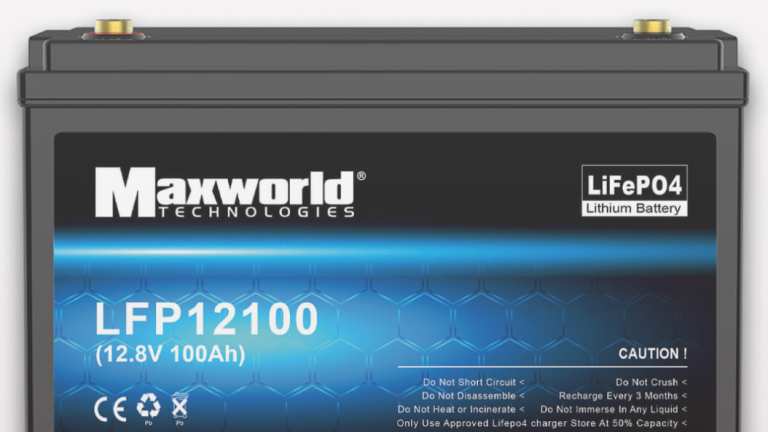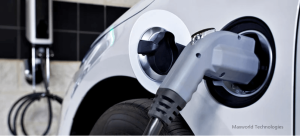Breaking Down Myths: Dispelling Common Misconceptions about LiFePO4 Batteries

Introduction: Clearing the Air on LiFePO4 Batteries
As lithium iron phosphate (LiFePO4) batteries gain prominence in the energy storage landscape, misconceptions and myths surrounding their performance, safety, and suitability have emerged. Addressing these misconceptions is essential for stakeholders seeking to make informed decisions about adopting LiFePO4 batteries. The purpose of this page is to dispel popular misconceptions and offer information on the advantages and uses of LiFePO4 batteries.
LiFePO4 Batteries Are Prone to Thermal Runaway
The idea that LiFePO4 batteries are prone to thermal runaway, a condition linked to certain other lithium-ion chemistries, is among the more persistent ones. But compared to other lithium-ion batteries, LiFePO4 batteries have a more stable chemistry, which makes them intrinsically safer and less prone to thermal runaway. Their robust thermal stability and tolerance to overcharging and high temperatures contribute to their widespread use in applications where safety is paramount.
Moreover, LiFePO4 batteries have a unique crystal structure that offers inherent thermal stability. Unlike lithium cobalt oxide batteries, which can experience thermal runaway when damaged or overcharged, LiFePO4 batteries are less reactive and have a lower risk of thermal runaway events. They are the best option for applications needing high levels of dependability and safety, such energy storage systems and electric cars, because of this innate safety feature.
LiFePO4 Batteries Have Low Energy Density
LiFePO4 batteries do provide a trade-off between energy density and safety, even if their energy density is somewhat lower than that of some other lithium-ion chemistries, such as lithium cobalt oxide (LiCoO2). LiFePO4 batteries prioritize safety, longevity, and stability over maximum energy density, making them well-suited for applications where safety and reliability are critical. Moreover, the energy density of LiFePO4 batteries has been steadily improving with advancements in battery materials and manufacturing processes.
It’s important to note that energy density is just one factor to consider when evaluating battery performance. Other factors such as cycle life, safety, and cost-effectiveness also play significant roles in determining the suitability of LiFePO4 batteries for specific applications. The advantages of LiFePO4 batteries—such as their extended cycle life, superior thermal stability, and less danger of thermal runaway—far exceed their somewhat lower energy density when compared to alternative lithium-ion chemistries in many applications.
LiFePO4 Batteries Have Short Cycle Life
The remarkable cycle life of LiFePO4 batteries is well known; they can withstand thousands of charge-discharge cycles without seeing appreciable deterioration. Unlike some other lithium-ion chemistries, LiFePO4 batteries exhibit minimal capacity fade over time, making them ideal for long-term use in applications such as electric vehicles, renewable energy storage, and grid-scale energy systems. Proper battery management, including controlled charging and discharging, can further extend the cycle life of LiFePO4 batteries.
The long cycle life of LiFePO4 batteries is attributed to their stable chemistry and robust electrode structure. The phosphate-based cathode material provides excellent structural stability and resistance to degradation, even under high charge and discharge rates. Additionally, advancements in battery manufacturing techniques, electrode coatings, and electrolyte formulations have contributed to further improvements in cycle life and performance.
LiFePO4 Batteries Are Expensive
LiFePO4 batteries may cost more up front than conventional lead-acid batteries, but over the course of their lifespan, they frequently end up being more cost-effective overall. LiFePO4 batteries offer longer cycle life, higher energy efficiency, and lower maintenance requirements, resulting in lower overall operating costs and a better return on investment. As economies of scale and technological advancements drive down manufacturing costs, the price of LiFePO4 batteries is expected to become more competitive in the future.
In addition to the initial purchase price, the total cost of ownership (TCO) study accounts for ongoing running costs, maintenance costs, and replacement costs during the battery’s lifespan. LiFePO4 batteries typically require less frequent replacements and maintenance compared to lead-acid batteries, resulting in lower overall TCO despite the higher upfront cost. Additionally, the scalability and modularity of LiFePO4 battery systems allow for customized solutions tailored to specific energy storage requirements, further optimizing cost-effectiveness.
LiFePO4 Batteries Cannot Be Fast-Charged
LiFePO4 batteries can be fast-charged safely and efficiently, provided that proper charging protocols and parameters are followed. LiFePO4 batteries can enable fast-charging capabilities appropriate for many applications, while generally having lower charging rates than certain other lithium-ion chemistries. Advances in battery management systems (BMS) and charging infrastructure enable optimized charging profiles that balance fast charging with battery longevity and safety.
The charging rate of LiFePO4 batteries depends on several factors, including cell design, electrode materials, and temperature management. By controlling the charging voltage, current, and temperature within safe limits, LiFePO4 batteries can be fast-charged without compromising performance or safety. Moreover, advancements in charging technology, such as pulse charging and adaptive charging algorithms, help maximize charging efficiency and minimize charging times while ensuring battery health and longevity.
LiFePO4 Batteries Are Not Environmentally Friendly
LiFePO4 batteries are thought to have a lesser environmental effect and a more stable chemistry than certain other lithium-ion chemistries. They reduce environmental pollution and resource depletion since they don’t contain any harmful heavy metals like nickel or cobalt. Additionally, LiFePO4 batteries are recyclable, with established recycling infrastructure enabling the recovery and reuse of valuable materials, further enhancing their environmental sustainability.
The environmental impact of LiFePO4 batteries extends beyond their chemical composition to include factors such as energy efficiency, resource conservation, and end-of-life management. Over the course of their lives, LiFePO4 batteries consume less energy and emit fewer greenhouse gases than lead-acid batteries because they often have better energy efficiency and lower self-discharge rates. Proper end-of-life management practices, including recycling and disposal in accordance with regulatory requirements, further minimize the environmental footprint of LiFePO4 batteries.
Conclusion: Debunking Myths, Embracing Facts
In conclusion, dispelling common misconceptions about LiFePO4 batteries is essential for promoting informed decision-making and realizing the full potential of this advanced energy storage technology. By addressing myths surrounding thermal runaway, energy density, cycle life, cost, charging capabilities, and environmental impact, stakeholders can gain a clearer understanding of the benefits and capabilities of LiFePO4 batteries. LiFePO4 batteries are positioned to be a key player in accelerating the shift to greener, more sustainable energy sources as awareness rises and technology advances.






